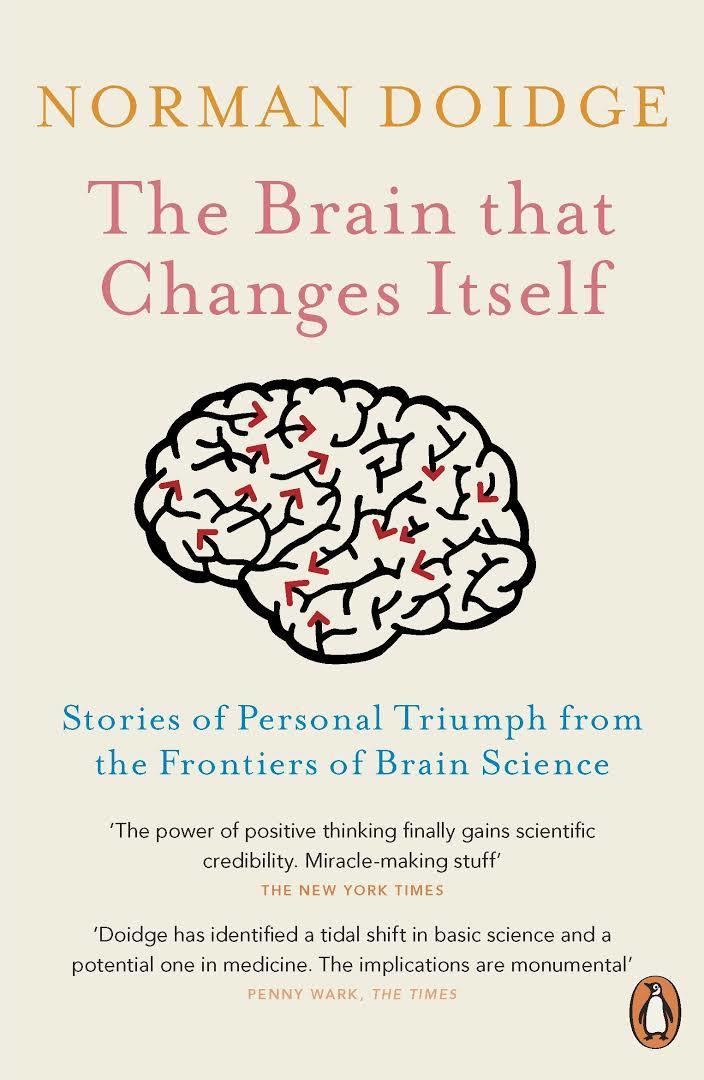8.8 /10 1 Votes
Language English Media type Print, e-book ISBN 978-8178241753 Originally published 2007 Publisher Viking Press Subject Neuroplasticity | 4.2/5 Goodreads 4.4/5 Barnes & Noble Publication date 2007 Pages 427 pp. OCLC 71189897 Genre Non-fiction Country United States of America | |||||||||||||||||||||||||||||||||
 | ||||||||||||||||||||||||||||||||||
Similar Psychology books, Brain books | ||||||||||||||||||||||||||||||||||
The brain that changes itself by normal doidge loy machedo s book review
The Brain That Changes Itself: Stories of Personal Triumph from the Frontiers of Brain Science is a book on neuroplasticity by psychiatrist and psychoanalyst Norman Doidge, M.D. It features numerous case studies of patients suffering from neurological disorders and details how in each case the brain adapts to compensate for the disabilities of the individual patients, often in unusual and unexpected ways. Interviews with the patients, clinicians, and research scientists involved in these studies make up a large portion of the contents. Doidge uses examples of previous work carried out by neuroscientists such as Paul Broca, Sigmund Freud, Alexander Luria, Donald O. Hebb, Paul Bach-y-Rita, and Eric Kandel to show that the brain is adaptive, and thus plastic. Through the case studies, Doidge demonstrates both the beneficial and detrimental effects that neuroplasticity can have on a patient, saying, "... neuroplasticity contributes to both the constrained and unconstrained aspects of our nature." However, according to Doige, neuroplasticity "... renders our brains not only more resourceful, but also more vulnerable to outside influences."
Contents
- The brain that changes itself by normal doidge loy machedo s book review
- Norman doidge allan gregg the brain that changes itself
- Skills
- Reception
- References
Norman doidge allan gregg the brain that changes itself
Skills
An important example of neuroplasticity is how humans gain skills. Doidge presents an experiment performed by Alvaro Pascual-Leone in which he mapped the brains of blind people learning to read Braille. Braille reading is a motor activity, which involves scanning with a reading finger, and a sensory activity, which involves feeling the raised bumps. The brain maintains a representation of these sensory and motor aspects, which are located in different cortices. The blind subjects practiced two hours a day, Monday through Friday, with an hour of homework. The mapping of their brains took place on Monday, after the weekend, and Friday, immediately after their week cram. What the scans ultimately showed is that the maps dramatically increased in size on Friday scans but returned to a "baseline" size on the following Monday. It took six months for the baseline Monday map to gradually increase and by ten months they plateaued. After the blind subjects took a two-month break, they were remapped, and their maps were unchanged from their last Monday mapping. What this shows is that long lasting changes as the result of skill learning took 10 months of repeated practice. The reason why short-term improvements were made based on the Friday mappings, but eventually disappeared, suggests differing plastic mechanisms. The Friday changes strengthen existing neuronal connections and unmask old buried pathways. Monday mappings, though showing little progress initially and plateauing at ten months, suggest the creation of new neural connections and synapses.
Reception
The New York Times gave a mostly positive review of the book.
However The International Journal of Psychoanalysis published a negative book review essay critical of Doidge's writings. The review claims that neuroscience is irrelevant to the study of psychoanalysis.
